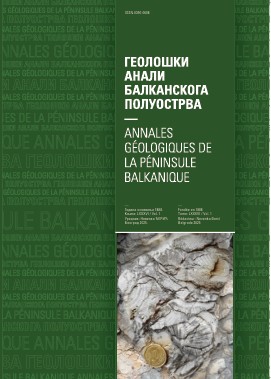The age of the brachiopod limestones from Guča, western Serbia
Abstract
The asymmetric rhynchonellide brachiopod Cyclothyris? globata (ARNAUD, 1877) has a large distribution in the Coniacian, Santonian and Campanian outcrops of the western Tethys. The species has also been identified in Guča, (Vardar Zone, western Serbia), where it occurs together with the capillate terebratuloid “Terebratula” sp. (gen. et sp. nov.). In addition to Serbia, this brachiopod association is found in many localities of northeastern Bulgaria (Shumen Formation). In older literature, in Romania and Bulgaria, “Terebratula” sp. (gen. et sp. nov.) was confused with the Late Maastrichtian Terebratulina striata (WAHLENBERG, 1821). The present microfaunal study based on planktonic foraminifera showed that the age of the beds with Cyclothyris? globata and “Terebratula” sp. (gen. et sp. nov.) in Guča may be dated as Lowermost Campanian, i.e., the Santonian/Campanian boundary.
Copyright (c) 2010 Geološki anali Balkanskoga poluostrva

This work is licensed under a Creative Commons Attribution 4.0 International License.










